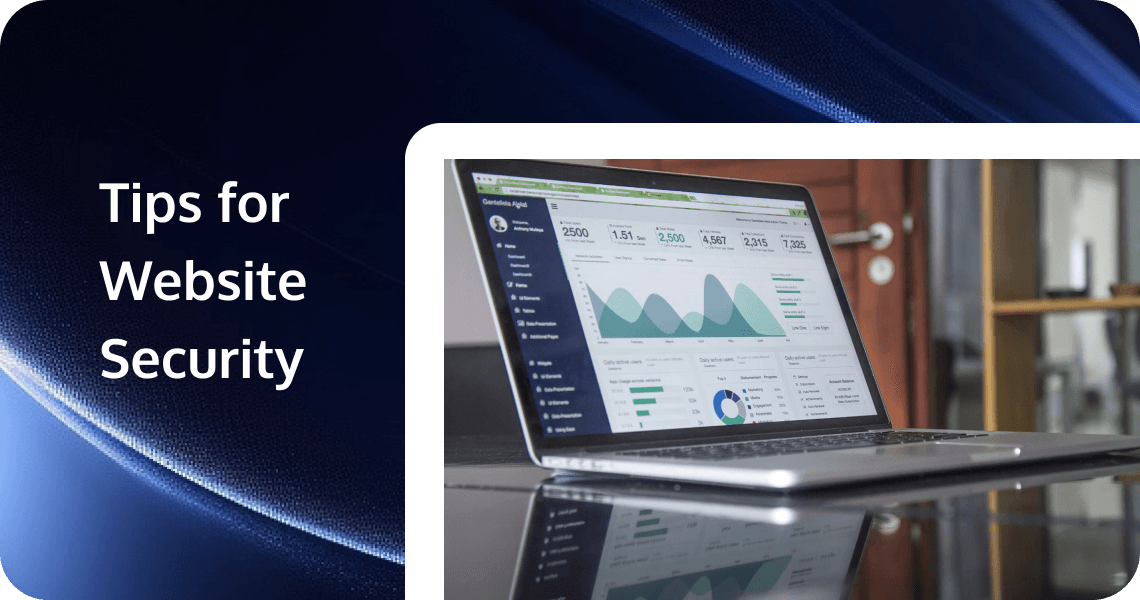How to Protect Your Website from Hackers: 10 Effective Tips for Enhanced Security

In today's digital age, having a website is essential for businesses and individuals alike. However, with the increasing prevalence of cyber threats, protecting your website from hackers has become more important than ever. Hackers are constantly looking for vulnerabilities to exploit, which can lead to data breaches, loss of customer trust, and even legal issues. In this article, we will explore 10 effective tips to help you safeguard your website against these malicious actors.
Understanding Website Security Threats
To protect your website, you must first understand what you're up against. Here are the most common types of cyber attacks targeting websites today:
- DDoS Attacks (Distributed Denial of Service): These attacks overwhelm your server with traffic from multiple sources, causing your website to slow down or crash completely. They're often used as diversionary tactics while other attacks occur simultaneously.
- SQL Injection: Attackers exploit vulnerable database queries to insert malicious code, potentially accessing, modifying, or deleting your database content. This can lead to unauthorized access to sensitive information like customer data or passwords.
- Cross-Site Scripting (XSS): Hackers inject malicious scripts into web pages that are viewed by other users. When executed, these scripts can steal session cookies, redirect users to malicious sites, or manipulate website content.
- Brute-force Attacks: This involves systematically attempting numerous password combinations to gain unauthorized access to admin areas, user accounts, or server connections.
- Malware and Ransomware: Malicious software can be planted on your website to steal information, create backdoor access, or encrypt your files until a ransom is paid.
Hackers typically identify targets through automated scanning tools that detect common vulnerabilities. They look for outdated software, known security flaws in popular platforms, and weak points in your website configuration. Understanding these attack vectors is the first step in building effective defenses.
Website security isn't merely about protecting your digital property—it's about safeguarding your business reputation, customer data, and operational continuity. This guide provides 10 practical, effective tips to protect your website from hackers and enhance your overall security posture.
Tip 1: Keep All Software Updated
Outdated software is one of the most common entry points for hackers. Establish a regular update schedule for:
- Content Management System (CMS) core files
- Plugins and extensions
- Themes and templates
- Server software and operating systems
Many successful attacks exploit known vulnerabilities that have been patched in newer versions. Enable automatic updates when possible, and create a calendar reminder for manual updates. For critical systems, test updates in a staging environment before deploying to your live site.
Tip 2: Implement Strong Authentication Systems
Weak authentication is a hacker's best friend. Strengthen your defenses with:
- Multi-Factor Authentication (MFA): Require at least two forms of verification before granting access to admin areas
- Strong Password Policies: Enforce complex passwords with a minimum of 12 characters, including a mix of uppercase and lowercase letters, numbers, and symbols
- Account Lockout Mechanisms: Automatically lock accounts after multiple failed login attempts
- Session Management: Set appropriate timeouts for user sessions and regenerate session IDs after login
For content management systems, install security plugins that enhance login security by limiting login attempts and implementing IP blocking for suspicious activity.
Tip 3: Secure Your Website with SSL/TLS Encryption
SSL/TLS certificates are no longer optional for any website:
- Install an appropriate SSL certificate for your site (Domain Validated for basic sites, Extended Validation for e-commerce)
- Configure your website to use HTTPS exclusively
- Implement 301 redirects from HTTP to HTTPS pages
- Use HTTP Strict Transport Security (HSTS) headers to ensure browsers always connect via HTTPS
- Regularly check your SSL configuration using tools like Qualys SSL Labs
Beyond encrypting data transmission, SSL certificates also build visitor trust and improve search engine rankings, as Google now uses HTTPS as a ranking factor.
Tip 4: Deploy Website Firewall Protection
A Web Application Firewall (WAF) acts as a shield between your website and potential threats:
- Install a WAF to filter malicious traffic before it reaches your website
- Block common attack patterns like SQL injection and cross-site scripting
- Implement IP blocking for repeated suspicious activities
- Use geolocation filtering if you only serve specific regions
For small to medium websites, cloud-based WAFs like Cloudflare, Sucuri, or AWS WAF offer affordable protection. CMS-specific security plugins like Wordfence (WordPress) or Shield (Drupal) provide firewall functionality tailored to your platform.
Tip 5: Perform Regular and Secure Backups
When prevention fails, recovery becomes critical:
- Implement automated backups following the 3-2-1 rule:
- 3 copies of your data
- 2 different storage types
- 1 copy stored offsite
- Encrypt backup files containing sensitive information
- Test your restoration process regularly to ensure backups actually work
- Store backup access credentials separately from website credentials
- Consider versioned backups that allow you to restore to different points in time
Automated cloud backup solutions like Updraft Plus (WordPress), JetBackup (cPanel sites), or managed solutions from your hosting provider simplify this essential security practice.
Tip 6: Practice Secure Coding Techniques
The security of your website often depends on the quality of its code:
- Validate and sanitize all user inputs
- Use parameterized queries to prevent SQL injection
- Implement proper error handling that doesn't reveal sensitive information
- Apply the principle of least privilege in database connections
- Avoid including sensitive information directly in your code
If you're using third-party developers, ask about their security practices and code review processes. For existing sites, consider a professional security code review to identify potential vulnerabilities.
Tip 7: Implement Regular Security Scanning
Proactive detection helps identify vulnerabilities before hackers exploit them:
- Use vulnerability scanning tools to check for security issues
- Implement file integrity monitoring to detect unauthorized changes
- Conduct periodic penetration testing to simulate real-world attacks
- Scan for malware regularly
- Set up alerts for suspicious activities or unauthorized changes
Free and commercial tools like OWASP ZAP, Sucuri SiteCheck, or Nessus can help identify vulnerabilities. Many hosting providers and security services offer regular scanning as part of their packages.
Tip 8: Secure Your Hosting Environment
Your website security begins with your hosting provider:
- Choose a reputable hosting company with strong security practices
- Opt for managed hosting if your budget allows
- Configure proper file permissions (typically 644 for files and 755 for directories)
- Disable directory browsing to prevent information exposure
- Use SFTP instead of FTP for file transfers
- Consider isolated hosting environments (like containers or virtual private servers) for better security
If cost is a concern, a good shared hosting provider with specific security features is better than the cheapest option available.
Tip 9: Create and Maintain an Incident Response Plan
Despite best efforts, security incidents may still occur. Be prepared:
- Document procedures for identifying, containing, and recovering from breaches
- Designate responsible team members for different aspects of incident response
- Create templates for notifying affected users or customers if data is compromised
- Establish relationships with security professionals who can provide emergency assistance
- Practice your response plan periodically to ensure everyone knows their responsibilities
Even a basic plan dramatically improves recovery time and reduces damage from security incidents.
Tip 10: Stay Informed About Security Trends
The security landscape constantly evolves, requiring ongoing vigilance:
- Subscribe to security advisories relevant to your website technologies
- Follow reputable security blogs and news sources
- Join security-focused communities for your CMS or platform
- Consider security training for team members managing your website
- Set up Google Alerts for vulnerabilities related to your website components
Platforms like the US Computer Emergency Readiness Team (US-CERT), OWASP, and platform-specific security announcements provide valuable early warnings about emerging threats.
How EdgeOne Protects Your Website Security
EdgeOne is a comprehensive security solution that integrates advanced security features with edge computing capabilities, providing robust protection for your website. Here are some key ways EdgeOne enhances your website security:
Advanced Web Protection
EdgeOne offers out-of-the-box web protection capabilities, integrating web protection at the edge. It helps filter and block malicious traffic before it reaches your origin server, ensuring the security and reliability of your business. With features like managed rules, rate limiting, custom protection rules, and CC protection, EdgeOne effectively defends against common web threats such as SQL injection, XSS, and CSRF.
Distributed Security Protection
EdgeOne provides distributed security protection resources located in multiple independent cleansing centers worldwide. This distributed access architecture offers efficient redundancy and disaster recovery, ensuring your website remains available even during large-scale attacks.
Intelligent Bot Management
EdgeOne employs client profiling and intelligent analysis through rich bot feature control combined with Tencent Cloud's security database. This helps mitigate the risks posed by bot crawlers on your website, enhancing overall security.
DDoS Protection
EdgeOne provides platform-level default DDoS protection and resources for all users, meeting the daily protection needs of most site businesses. It offers automatic cleaning capability for high-volume DDoS attacks, ensuring the security of your user businesses.
Compatibility with Existing Security Policies
EdgeOne is designed to work seamlessly with your existing security infrastructure. It supports the marking of origin pull requests, allowing further analysis of requests at the origin server. This compatibility ensures that EdgeOne's security measures complement your current security policies without disrupting your operations.
Unified Management and Performance Optimization
EdgeOne simplifies security management through a single dashboard for monitoring and configuration. It processes security checks at the edge, reducing latency while maintaining protection. This integration of security and acceleration in a single platform not only enhances overall network resilience but also improves the user experience by optimizing content delivery.
By leveraging EdgeOne's comprehensive security features, you can effectively safeguard your website against a wide range of cyber threats, ensuring the safety and availability of your online services.
Conclusion
Protecting your website from hackers is an ongoing process that requires a combination of technical measures and best practices. By following these 10 tips, you can significantly enhance the security of your website and reduce the risk of a successful attack. Remember that security is not a one-time task but a continuous effort. Stay informed about the latest threats and security trends, regularly update your security measures, and always be prepared to respond to potential security incidents. With a proactive approach to website security, you can maintain the trust of your visitors and protect your valuable online assets.

